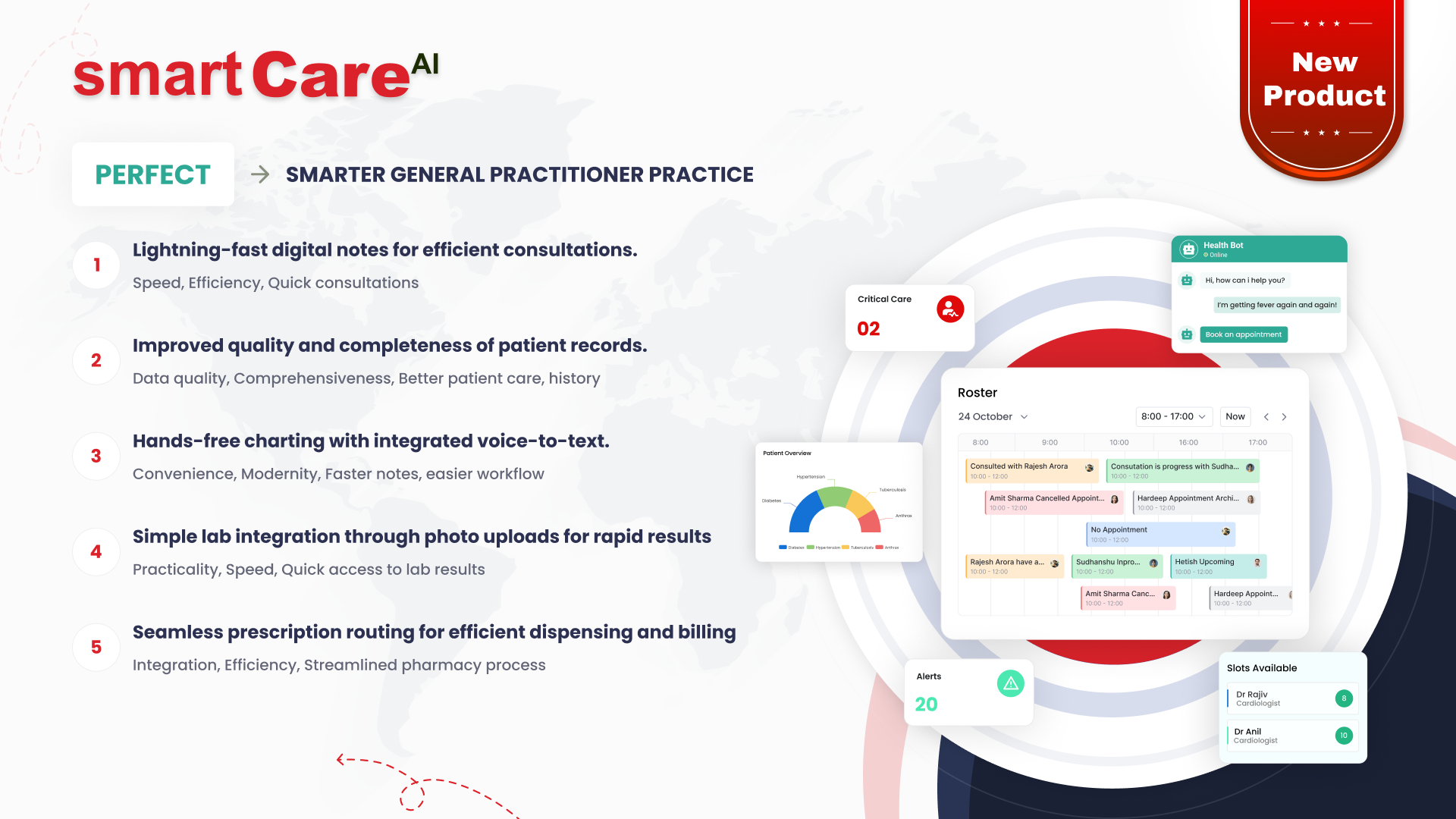
Posted On May 2, 2025
How to Build a Scalable Healthcare Software System for Future Growth
In today’s fast-changing healthcare environment, software systems need more than just basic functionality. They must be built to handle growth, adapt to new regulations, support evolving technologies, and scale with increased demand. Scalability is no longer optional—it’s essential.
Let’s explore the key areas that help in building a truly scalable healthcare software system.
What Makes a Healthcare System Truly Scalable?
A scalable healthcare software system can grow and evolve with your organisation without needing a complete rebuild. It should manage more users, data, and features as needed—all while maintaining performance and security. Scalability ensures your investment supports long-term goals and can handle both gradual and rapid growth.
Whether it’s onboarding more clinics, integrating new services, or adjusting to patient demand, scalability keeps your operations smooth and sustainable.
Planning for Growth from the Start
Scalability begins with strategic planning. During the initial stages of software development, it’s important to consider future needs. Will your software need to support remote patient care? Can it adapt to new compliance regulations or health data standards?
Early planning helps avoid costly redesigns later. Build with clear goals, flexibility, and the long-term picture in mind. Involving both technical and clinical stakeholders ensures your software aligns with real-world healthcare operations.
Choosing the Right Technology Stack for Scalability
The tools you choose to build your software system play a big role in how scalable it will be. Modern, cloud-friendly technologies offer flexibility and better performance at scale. Frameworks that support modular development allow features to be added or changed without affecting the entire system.
Open-source technologies, containerisation (like Docker), and microservices architecture are commonly used to support scalable systems. These allow your platform to grow as your patient base and service offerings expand.
Why Cloud Infrastructure Supports Long-Term Expansion
Cloud infrastructure is one of the most effective ways to ensure scalability in healthcare software. It enables flexible storage, better performance, and cost-effective resource management. With cloud-based systems, healthcare providers can scale up or down based on real-time demand without major hardware investments.
In addition, cloud platforms provide built-in tools for data backup, disaster recovery, and system monitoring—essential for maintaining reliability as you grow.
Designing Flexible Architectures for Changing Needs
Healthcare is constantly evolving—new treatments, regulations, and technologies emerge every year. A scalable system must be built on a flexible architecture that supports these changes without starting from scratch.
Modular design, plug-and-play features, and API-first development are key approaches. They allow healthcare organisations to upgrade or replace components easily, ensuring long-term adaptability without downtime or disruption.
How to Ensure Seamless System Integration
In healthcare, various departments use different tools and platforms. For a scalable system, it’s important to make sure that your software integrates smoothly with other systems—like electronic health records (EHR), billing platforms, and lab systems.
Seamless integration prevents data silos and supports better decision-making. Using standard protocols (like HL7 or FHIR) helps ensure that your system communicates effectively with others. This also reduces manual work, boosts efficiency, and enhances patient care.
The Role of Data Security in Scalable Healthcare Systems
As your system grows, so does the amount of sensitive patient data it handles. Scalability must go hand in hand with security. A robust data protection strategy includes encryption, access control, regular audits, and compliance with regulations like HIPAA or GDPR.
Incorporating security features early in development avoids costly redesigns later. It also builds trust—patients and healthcare staff alike need to know their data is safe, even as the platform expands.
Preparing for Regulatory Changes as You Scale
Healthcare is one of the most heavily regulated sectors. As regulations evolve, your software must adapt without needing a complete overhaul. Scalable systems are built with modularity in mind—meaning you can update or replace individual components without disrupting the entire system.
Working with compliance experts during development can help you prepare for shifts in policy and ensure your system remains audit-ready at all times.
Performance Testing: Making Sure Your System Can Handle More
Before you scale, you need to know if your software can handle it. Performance testing under simulated stress conditions can reveal weaknesses early—whether it’s slow loading times, data bottlenecks, or crashes under load.
Continuous performance testing ensures that your system is always ready to support more users, more data, and more features, without compromising speed or reliability.
Future-Proofing Your Software with Regular Updates and Innovation
The healthcare industry is evolving, and your software should too. Building in a system for regular updates ensures your solution stays current with the latest technology, user needs, and industry standards.
A forward-looking approach also means keeping an eye on innovations like AI, machine learning, or remote patient monitoring. Even if you don’t use them now, a scalable system should leave room for easy adoption in the future.
Conclusion
Scalable healthcare software is more than just robust coding — it’s thoughtful planning, secure practices, and continuous improvement. From integration to innovation, every decision you make today affects your ability to grow tomorrow.
If you’re looking to build a healthcare system that’s designed for long-term success, our experts at smartdatainc.com are here to help. With years of industry experience and a commitment to future-ready solutions, we ensure your software adapts as you grow.
